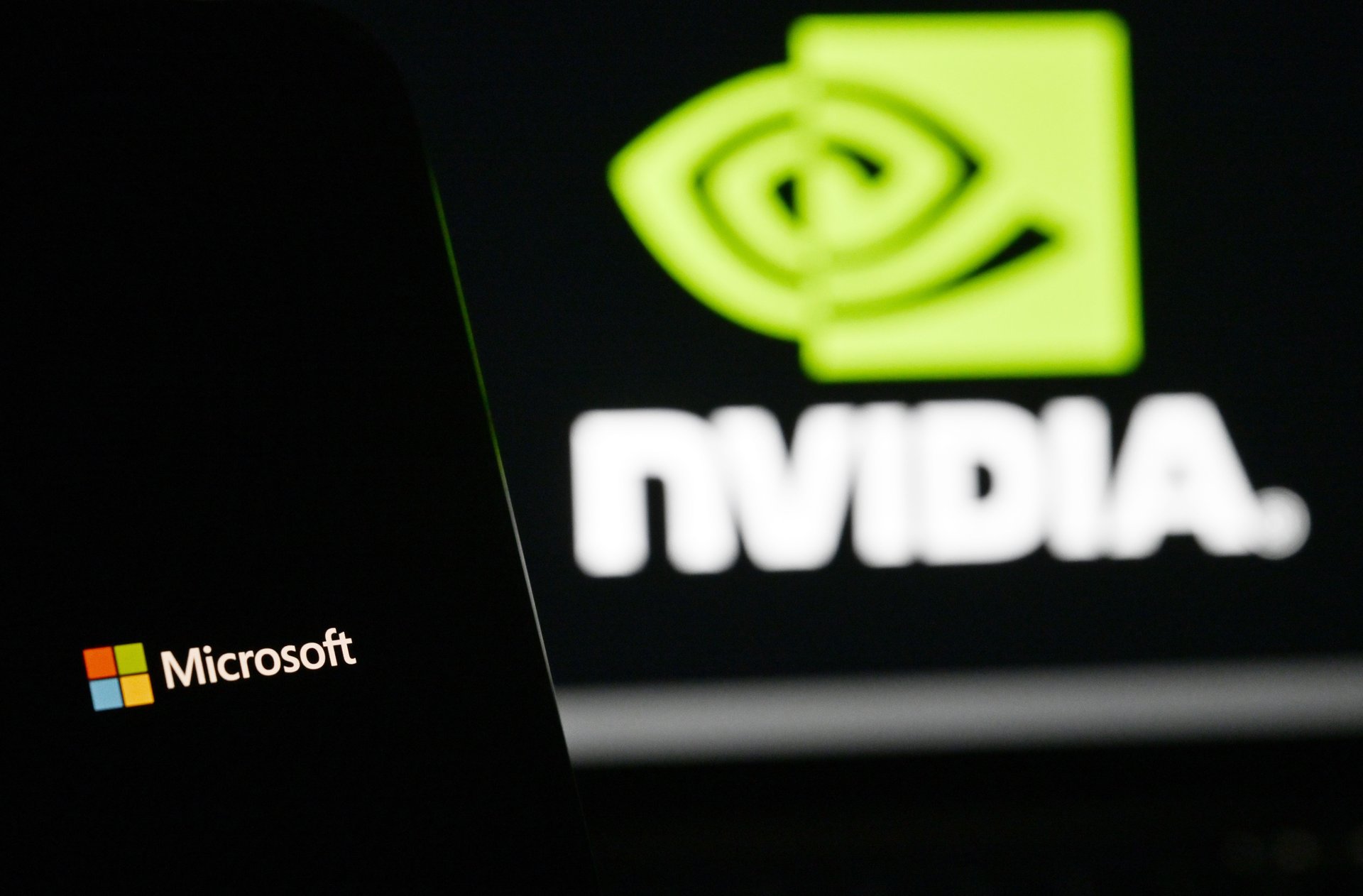🌎 The race to $4 trillion
Plus: The elements of a deal.

Rasit Aydogan/Anadolu via Getty Images
Good morning, Quartz readers!
Suggested Reading

Here’s what you need to know
Coming this week: It’s a light week because markets are off for July 4, but Wall Street will get fresh jobs data and beer earnings — the calm before Q2 earnings and a looming Fed decision.
Related Content
Belief is back (ish). Americans are more confident about the economy than they have been in months, with sentiment up 16% in June but still below numbers from late last year.
Clause and effect. An AI provision in Trump’s megabill is getting bipartisan backlash because the measure bans state regulations in exchange for $500 million in federal funding.
Losses in the fine print. A tweak to the U.S. tax code helped fuel tech layoffs, shaped investments, and rewired the white-collar workforce — and here’s how the tax code works.
The sole survivor. Despite reporting rough quarterly earnings (its worst sales drop in five years), Nike stock surged 16% as the CEO said the company can “only go up from here.”
Macro takes, micro filter. Meet Spencer Hakimian, who runs hedge fund Tolou Capital but has become better known for his provocative macroeconomic takes on social media.
SPONSORED CONTENT BY RAMIT SETHI

Master your money. Live rich.
Ramit Sethi, NYT bestselling author and Netflix host, helps millions live their richest lives. Get expert financial insights, strategies, and real-world advice delivered directly to your inbox.
The AI of the tigers
The most expensive race on Earth is happening on Wall Street, where Nvidia and Microsoft are locked in a trillion-dollar tango to see who can hit a $4 trillion valuation first.
In one corner: Microsoft, the AI-software sovereign with a Copilot in every productivity suite and Azure in every Fortune 500 roadmap. In the other: Nvidia, the chipmaking giant minting gold (a.k.a. H100s and Blackwells) for the generative age. Combined, they control more than $7.5 trillion in market cap — and just about all of AI’s infrastructure, inspiration, and upside.
Nvidia briefly overtook Microsoft earlier this month to claim the “most valuable public company” crown, but Microsoft snatched it back faster than you can say “hyperscaler spending spree.” This week? Nvidia rallied again. The baton-passing might be comical if the stakes weren’t quite so macroeconomically existential.
Wall Street’s Dan Ives is calling this “The race to $4 trillion” — a back-and-forth powered by hyperscaler budgets, GPU scarcity, and investor FOMO. He’s betting both companies hit $4 trillion this summer, and he’s already eyeing $5 trillion as the next lap. It helps that Nvidia is essentially a monopoly in AI chips — and that for every $1 spent on their silicon, $8–$10 ripples downstream across the tech stack. Microsoft, for its part, is scooping up those ripples like it’s building a moat.
But for all the momentum, neither company’s path is friction-free. One supply chain hiccup or cloud earnings miss, and it might be back to square trillion.
The story isn’t just about who crosses the line first — although that’s a huge part of it. It’s a referendum on where AI’s value lives — in the chips that power it, or the platforms that deliver it. Silicon versus software. Chip versus cloud. Jensen Huang versus Satya Nadella. Who will take the lead? It’s a coin flip — only the coin is worth $300 billion. Quartz’s Shannon Carroll has more on who wins when the chips are up.
Rare earths, common ground
The latest twist in the U.S.–China trade saga comes with a glitter of compromise — and a faint whiff of gallium. On Friday, Beijing said it had struck a deal with Washington to ease tech restrictions and restart rare earth exports, temporarily unclogging the arteries of global manufacturing. If that sounds familiar, it’s because these vital minerals — critical for everything from EV motors to missile guidance systems — have become the periodic table’s favorite political bargaining chip.
China’s Commerce Ministry said it would begin reviewing and approving applications for exports of “controlled items,” with the U.S. pledging to “correspondingly” roll back certain measures in return. While both sides avoided specifics, Treasury Secretary Scott Bessent declared this a move toward “de-escalation.” Not quite peace in our time, but at least your car might still get built. This delicate dance stems from a mid-May “understanding” forged in Geneva — essentially a political ceasefire wrapped in vague language and tungsten tension. Friday’s update suggests the détente is holding — for now.
President Donald Trump told reporters on Thursday that the U.S. had “signed with China yesterday,” offering details that could fit on a Post-it note. But behind the curtain, a rotating cast of Trump officials — including Commerce Secretary Howard Lutnick — has been jetting between London and Beijing to hammer out logistics, timelines, and what counts as “holding up your end of the bargain.” It’s part of a broader push by the Trump administration to recenter global trade flows and make deals ahead of a looming July 9 deadline — or to at least spin things that way.
For now, America’s rare earth addiction is back on a drip. But in this high-stakes game of mineral diplomacy, every handshake is provisional, and every magnet comes with strings attached. Quartz’s Joseph Zeballos-Roig has more on how a soft truce keeps hard metals moving.
SPONSORED CONTENT BY RAMIT SETHI

Master your money. Live rich.
Ramit Sethi, NYT bestselling author and Netflix host, helps millions live their richest lives. Get expert financial insights, strategies, and real-world advice delivered directly to your inbox.
A story featured in Friday’s edition of the Daily Brief misstated the number of people in the U.S. taking GLP-1 drugs. It is about six million people, not 30 million.
Our best wishes on a safe start to the day. Send any news, comments, and more to [email protected].
